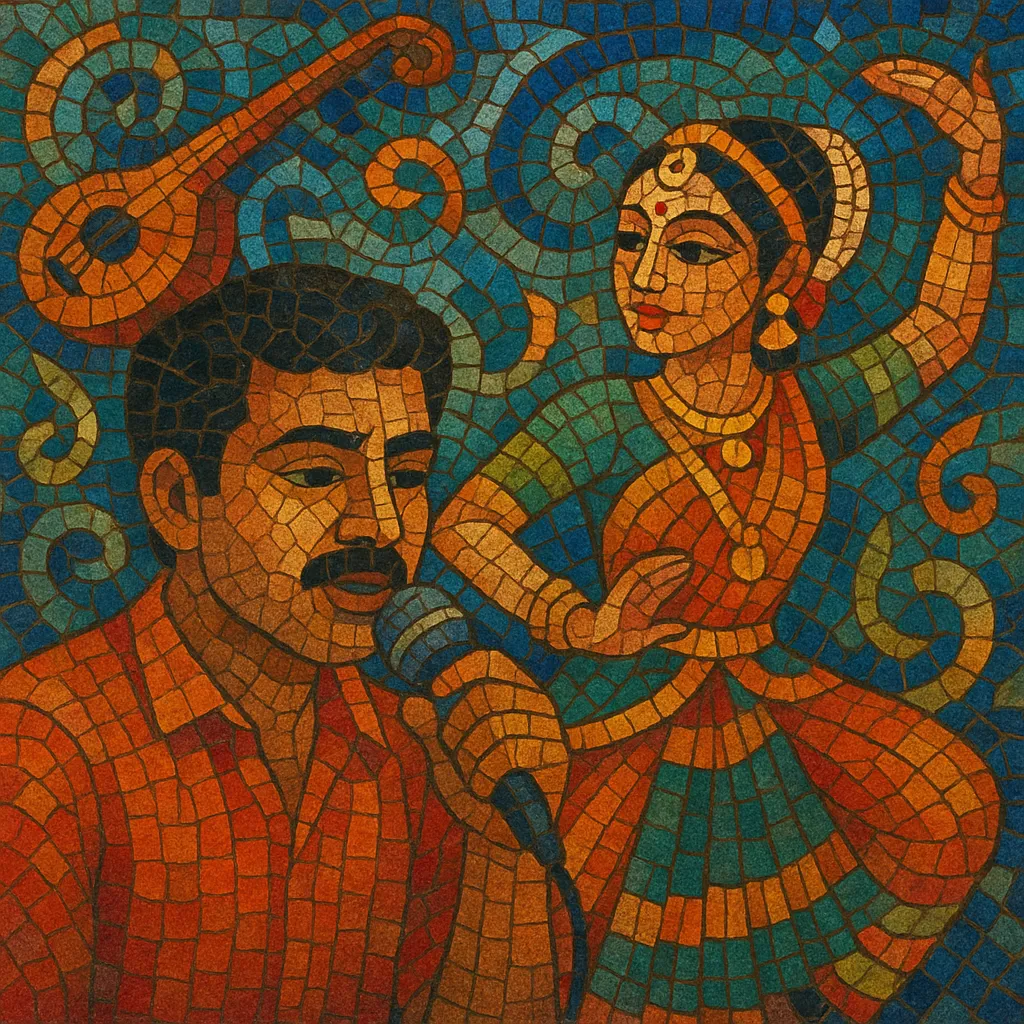Kollywood (Tamil film music) is the popular music associated with the Tamil-language film industry centered in Chennai, India. It blends Carnatic classical melody writing with Western orchestration, pop song forms, and contemporary production.
Songs are typically crafted for cinematic situations and delivered by playback singers, resulting in a catalog that spans romantic ballads, folk-inspired numbers, devotional themes, and high-energy dance tracks (kuthu/gaana). Characteristic features include raga-based melodies, memorable hooks, lush string arrangements, hybrid percussion (mridangam, thavil, urumi, ghatam alongside drum kits and samples), and a fluid adoption of global styles such as disco, synth-pop, EDM, rock, and R&B. The genre emphasizes melodic richness, dramatic dynamics, and strong lyrical storytelling in Tamil.
Tamil cinema embraced music from its first talkies in the early 1930s. Film songs were heavily rooted in Carnatic classical traditions, with simple orchestration and strong emphasis on raga purity and clear diction. This laid the foundation for a song-led cinematic culture.
The composer partnership of M. S. Viswanathan and T. K. Ramamoorthy (later MSV solo) modernized Tamil film songs by fusing Carnatic melody with Western orchestration, swing and light-classical elements. Lyricists like Kannadasan helped standardize the film song’s dramatic, story-driven function and the pallavi–anupallavi–charanam structure.
Ilaiyaraaja reimagined Kollywood music with intricate counterpoint, folk rhythms, and analog synths. His arrangements married rural Tamil folk idioms with Western harmony and string writing, expanding the harmonic palette while preserving raga flavor. The result was a signature Kollywood sound that was both sophisticated and accessible.
A. R. Rahman ushered in a new era with digital studios, world-music influences, and cutting-edge sound design. His work integrated techno, ambient, R&B, and orchestral film scoring, making Tamil film music internationally visible and setting new production standards across Indian cinema.
Composers like Deva, Harris Jayaraj, Yuvan Shankar Raja, G. V. Prakash Kumar, D. Imman, and Anirudh Ravichander further blended EDM, hip hop, synth-pop, and trap with Tamil folk and classical roots. Kuthu/gaana dance numbers and emotive “melody” ballads co-exist, while streaming platforms, pan-Indian releases, and cross-language remakes amplify Kollywood’s reach.


